I can relate very strongly to this exhibition. The memories that are evoked from people through their traditions and their interests that follow families through generations. My mother was a tailoress and as a child I can remember sitting on the floor and playing with pieces of material whilst she was sewing. I’ve never felt so close to my mum as when I tell my daughter how to do a button hole, how to put in a zip.

Stitching Traditions exhibition
This incredible exhibition launched at Charnwood Museum on 30th September 2019. It was the culmination of an 8-month journey of exploration, sharing, learning, caring and curating for the ladies.
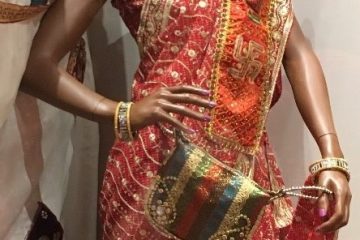
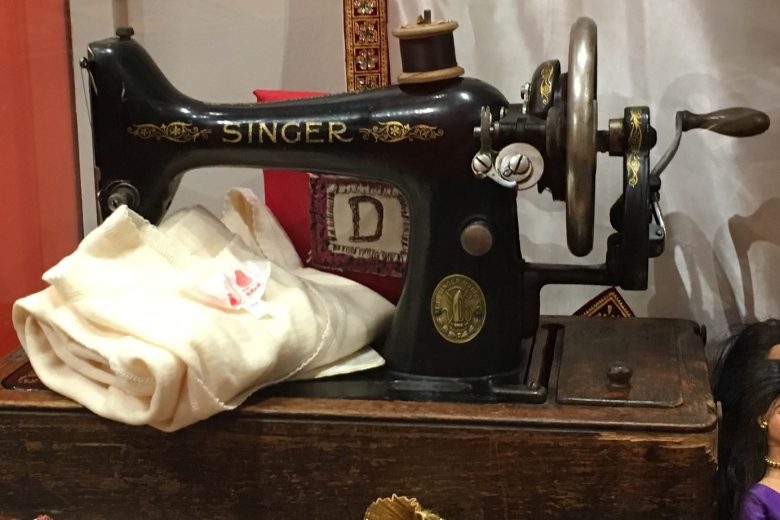
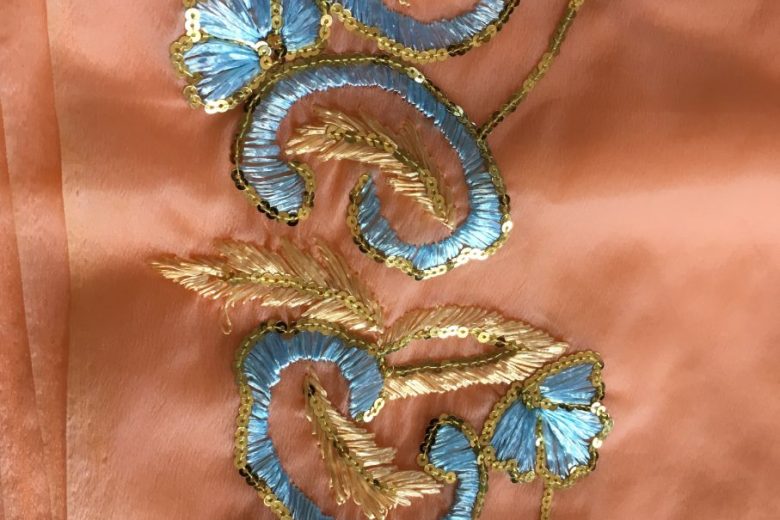
“The sari on the mannequin is a wedding sari, hence it is quite elaborate. Red is a very traditional colour for weddings in South Asia. This sari was given to me from a friend, who bought it 10 years ago in Surat, India (the textile hub of India) for a daughter-in-law’s wedding. The colourful piece is worn on the right shoulder by the mums of both the bride and groom.” – Minara
“I used to work in the Herbert Street factory called Godkins. It was a very small company which made outer wear and underwear. My job was examining and packing. I kept a garment which is about 50 years old. It’s called a ‘Long John’. In the garment I have my examiner’s number (30). I worked there for quite a long time. It was a good, friendly atmosphere. It was at the back of my garden so very convenient for my children.” – Kamla
This peach colour sari was embroidered with raffia and sequins in Kitali, Kenya, Africa in 1968, brought from Nairobi to London. Dhamyanti wore it on the plane she took on 1st September 1971 from Kenya to the UK. She has kept the saris for these memories they bring back. Both are nylon saris that are hand stitched. She learned to hand stitch by watching her mum and she self-learned. She also learned how to make flower stitches from her mum.
Some of the ladies have generously offered to donate their treasured objects to the Museum Service so that the collections represent and remain relevant to all the people of Leicestershire in the future. Objects include these beautiful Barbies (see images above). “My mum went on holiday and people were making dolls that people wanted. My mum asked for Asian dolls for my 2 daughters” – Anila
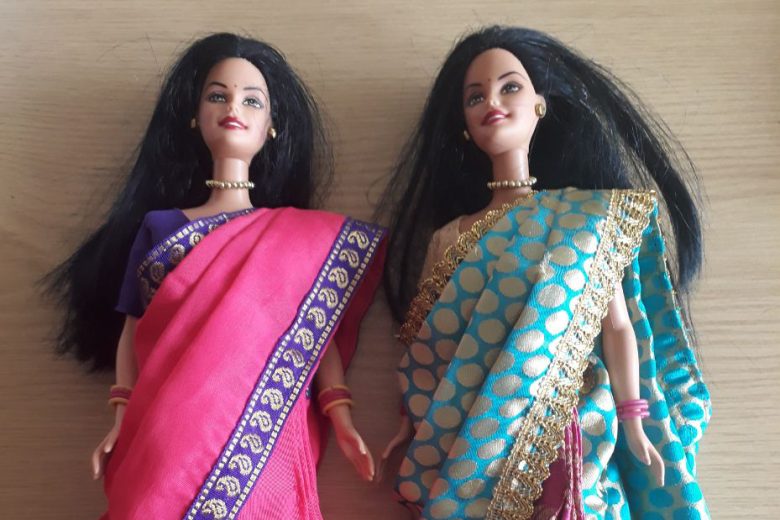
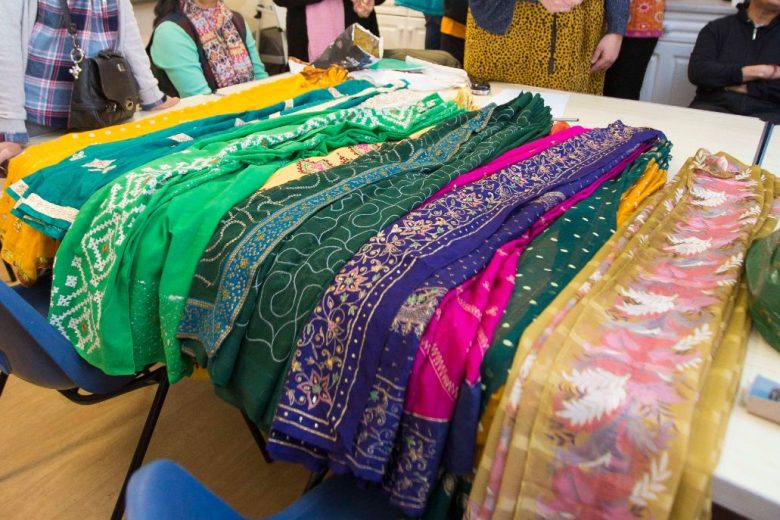
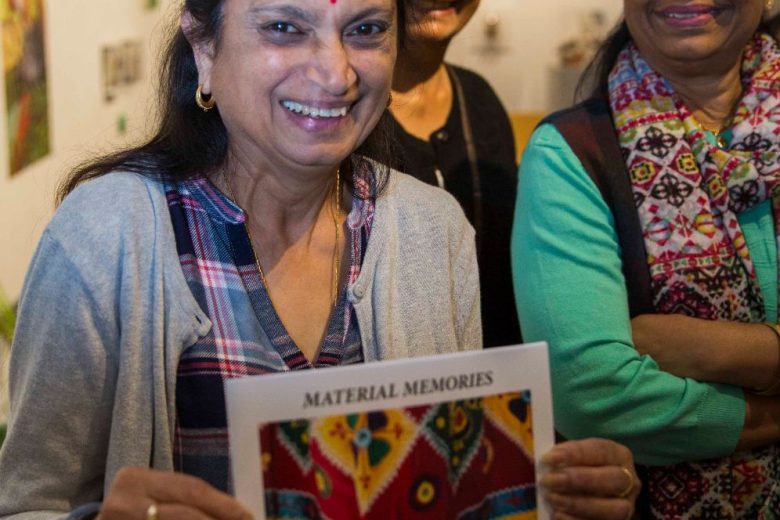
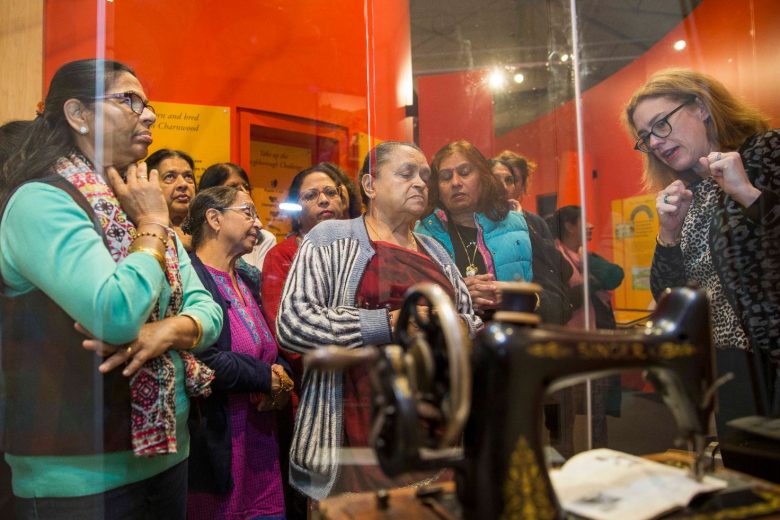
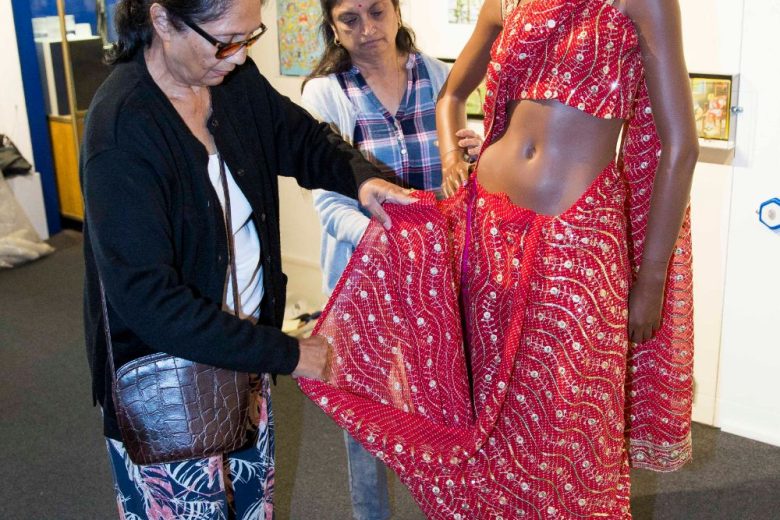
Giving people a voice
The ‘Stitching Traditions’ exhibition has brought people together through shared understanding and given people a voice to tell their stories to a wider audience.
“This is something very new that I’ve not been involved in before so the whole experience has been very interesting. After seeing the final display, it was a proud moment. So pleased how everyone worked together and was keen to contribute.” – Minara
“I’m impressed with everyone participating. The textiles and the stories told. Stitching talents have been revealed by people I didn’t realise were so talented. Great fun and encouraged cohesion in the group.” – Suella
“I enjoyed working in a team all together; collecting the stuff for the exhibition. I’m well proud of talking to people about what we were doing. This is not a full stop, this is a comma.” – Anila
Councillor Richard Blunt, County Council Cabinet Member for Heritage, Leisure and Arts, said: “The Stitching Stories exhibition and the ongoing project which led up to it has been a revelation both for the women of the Anand Mangal group and the museum professionals who worked on it with them.
The members of the group have been given a showcase for their work based on traditions and memories, as well as having the opportunity to work with professionals on a full-scale exhibition.
The contributions from the group have also given museums and heritage staff a new insight into how to develop new ways to represent the diverse communities in Leicestershire.”
